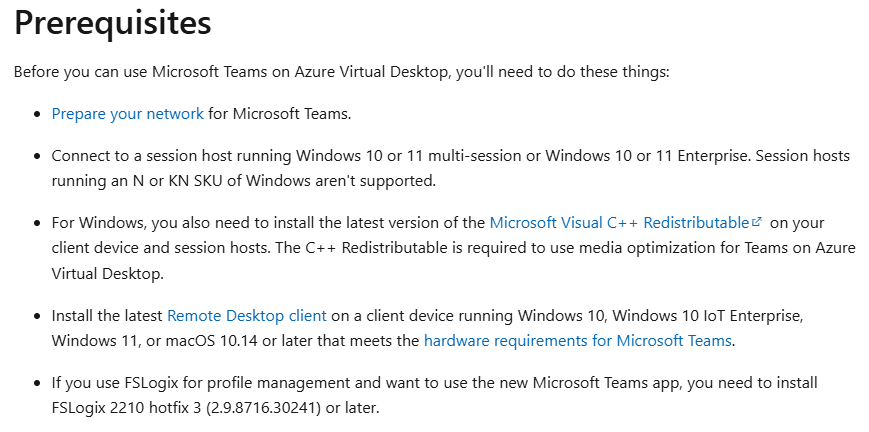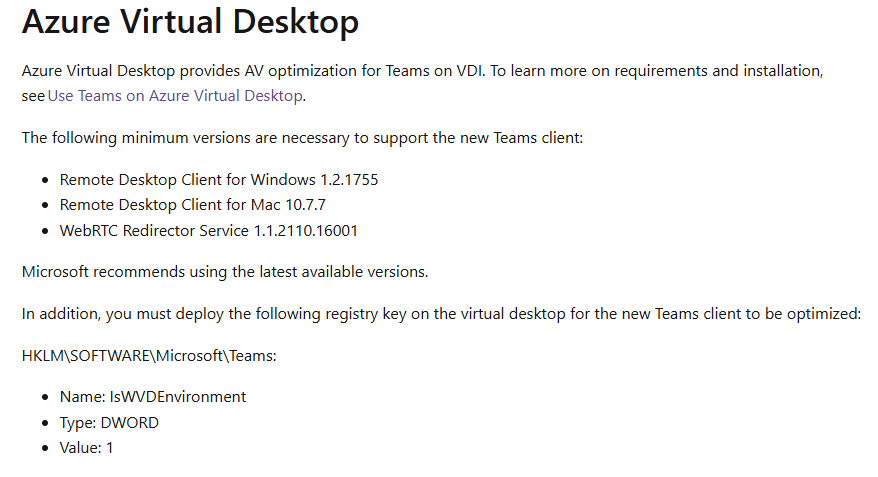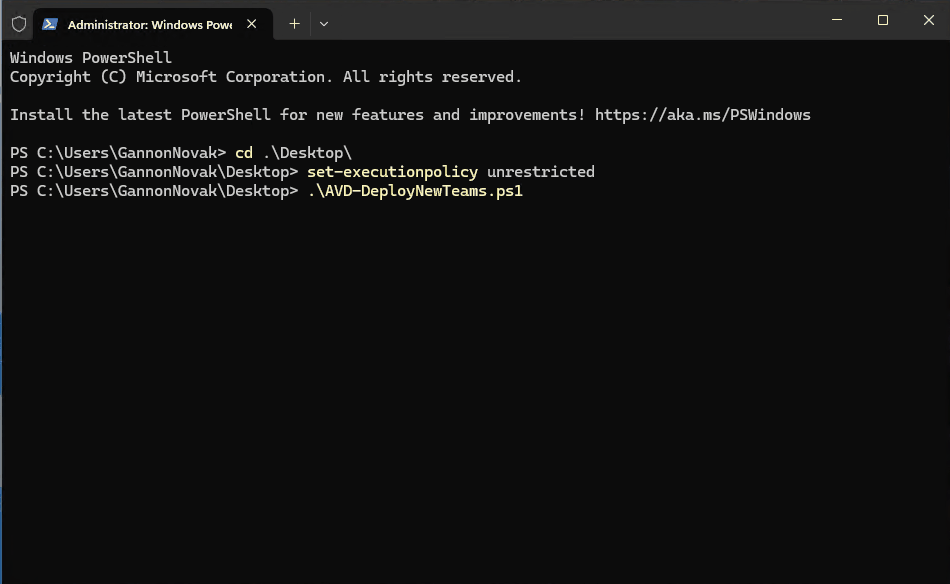Sure! Here’s a rewritten version while keeping the HTML tags intact:
Intro
If an organization is leveraging AVD, it is highly probable that they also utilize Teams. As many are aware, Teams underwent a significant transformation about a year ago with the introduction of a new client, which became generally available (GA). The previous version is now referred to as “Classic Teams,” while the newly developed client is called “New Teams.” This version offers numerous advantages over Classic Teams, with the most notable being enhanced performance and resource optimization. This enhancement is particularly beneficial for pooled AVD environments, as organizations often strive to maximize performance from their session hosts without sacrificing quality.
Although New Teams was released in June 2023, I’m only now addressing its installation on AVD in June 2024. Initially, the New Teams client wasn’t supported in pooled AVD setups using FSLogix. Given that 99% of pooled AVD setups are likely running FSLogix, this restriction excluded most deployments. Moreover, newly launched software generally comes with bugs and issues that need resolution. Therefore, integrating it into a production environment without adequate testing was ill-advised. As of February 2024, New Teams was “officially” supported with FSLogix in FSLogix 2210 hotfix 3 (2.9.8784.63912). However, it had not yet achieved full feature parity with Classic Teams, leading to numerous bug reports from the early adopters. Fortunately, in May 2024, FSLogix 2210 hotfix 4 (2.9.8884.27471) was released, offering many fixes. Microsoft now recommends using Hotfix 4 for those running New Teams in their AVD pooled environments. The image below references several New Teams updates in the FSLogix 2210 Hotfix 4 feature set:

Now that New Teams has been available for a year, FSLogix Hotfix 4 has been out for over a month, and testing feedback has been positive, it’s time to consider migrating your AVD environments from Classic Teams to New Teams—if you haven’t done so yet. Additionally, support for Classic Teams will end in October 2024. Unless you intend to use an unsupported product, you have about four months from this blog post’s publication date to transition to New Teams.
New Teams Requirements in AVD
The prerequisites for New Teams in AVD are outlined in two Microsoft Learn documents: New Microsoft Teams for Virtualized Desktop Infrastructure (VDI) – Microsoft Teams | Microsoft Learn and Use Microsoft Teams on Azure Virtual Desktop – Azure | Microsoft Learn. Below are excerpts from these documents.


If your AVD environment is kept moderately updated, you should find these requirements manageable. The primary focus should be ensuring that the registry value and key are in place, as this controls media redirection, along with ensuring that the latest WebRTC Service is installed. Additionally, it’s often overlooked, so ensure your client devices are operating on a supported version of the Remote Desktop Client or AVD App.
Installing New Teams in AVD
Transitioning to New Teams in AVD is a straightforward process. You still have the option to install Classic and New Teams concurrently, allowing users to “Try the new teams,” but I won’t detail that aspect (New Microsoft Teams for Virtualized Desktop Infrastructure (VDI) – Microsoft Teams | Microsoft Learn). If you plan to make the switch at this point, I recommend removing the Classic Teams client altogether.
On the AVD hosts, there are several components we need to update or ensure are installed:
- FSLogix 2210 Hotfix 4 or a newer version (as of this writing, this is the latest). While Hotfix 3 is compatible, it has multiple bugs with New Teams, so Microsoft advises using Hotfix 4. You can see the latest release notes and download the recent FSLogix version here. Ensure FSLogix is up to date before proceeding.
- The most recent version of the WebRTC Client can be downloaded here.
- The latest version of x64 and x86 of the C++ Redistributable.
- Verify the existence and accuracy of the registry value for IsWVDEnvironment.
- Uninstall the Classic Teams client machine-wide installer (if it’s present).
- Install the New Teams client (download here).
You can perform all these tasks manually if desired. However, to expedite the process or if updating an existing fleet of AVD hosts to use New Teams, you can utilize this script from my GitHub. The script does not install FSLogix but checks if Hotfix 4 or a newer version is present. If it isn’t, the script will terminate. If you’re aware your FSLogix versions are outdated, you’ll need to resolve that first. Assuming your hosts meet the FSLogix version requirements, the script will execute the following without user interaction:
- Download the latest installers for all prerequisites.
- Compare versions of the latest installers to those currently installed.
- Update/install any outdated or missing prerequisites.
- Verify and set the registry key and value for IsWVDEnvironment.
- Uninstall the Classic Teams client if it is present.
- Install the New Teams Client.
- Clean up installation files and save a transcript of the script output to c:\temp.
If you’re managing your AVD hosts with Intune, you can deploy this using a Win32 app, but consider separating some prerequisites to utilize dependencies; otherwise, you’ll need a lengthy custom detection script. Here’s a glimpse of what it looks like when launched from an interactive PowerShell window:

Feel free to make any additional adjustments or request further modifications!


Leave a Reply